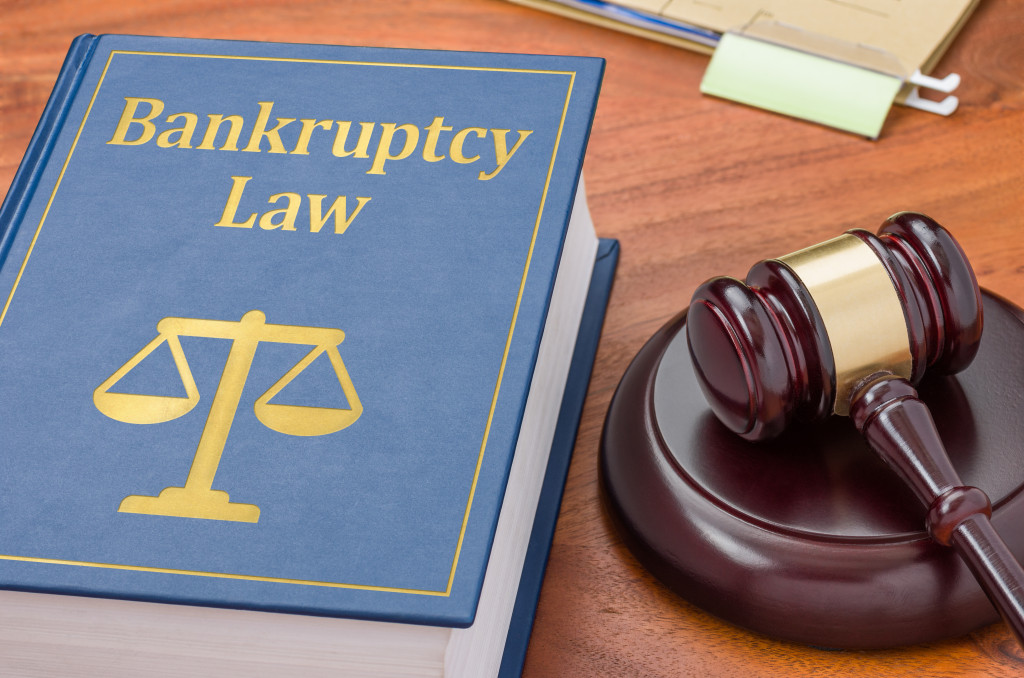- Bankruptcy is a complex process involving distinct options like an automatic stay, debtor in possession, understanding the creditor hierarchy, and creating a repayment plan.
- An automatic stay provides immediate, although temporary, relief from creditors upon filing for bankruptcy.
- The creditor hierarchy dictates the repayment order of creditors in the event of bankruptcy, with secured creditors usually being paid first.
- Transparency and honesty are paramount during bankruptcy, requiring providing accurate and complete financial information to all stakeholders.
Navigating the intricacies of business bankruptcy can be complex and daunting. As you embark on this journey, it’s critical to understand your legal obligations and rights. This process entails more than declaring an inability to pay debts; you must also consider how it will affect your stakeholders, the potential ramifications, and the available options. Delve into the crucial legal aspects you need to know when dealing with business bankruptcy.
Understanding Bankruptcy Options

When facing the prospect of business bankruptcy, understanding the different bankruptcy options available to you is a foundational step in managing and eventually overcoming this financial crisis. Here are some tips:
Automatic Stay
An automatic stay is a powerful legal injunction that effectively stops creditors from taking any actions, with a few exceptions, to collect debts from a debtor who has filed for bankruptcy. This crucial measure provides the debtor with much-needed relief and protection, allowing them to navigate the complex bankruptcy process without the constant pressure of debt collection efforts.
This is one of the critical benefits of filing for bankruptcy. Upon filing, the court will issue an automatic stay, immediately stopping most collection efforts, including litigation, wage garnishments, or phone calls demanding payments.
This is particularly beneficial for businesses that need immediate relief from creditors and offers them a chance to regroup and decide on the best way forward. It’s worth noting that the automatic stay is temporary and can be lifted by the court in certain situations, so professional legal advice is strongly recommended to understand the implications fully.
Debtor in Possession
“Debtor in Possession” (DIP) refers to a scenario where existing management continues to run the day-to-day business operations despite the bankruptcy filing. This situation happens during a Chapter 11 bankruptcy case, where the debtor, instead of appointing a trustee, remains in charge of the business under the supervision of the court.
The DIP has the responsibility of managing property accounting, evaluating and challenging claims, and submitting necessary reports as mandated by the court and the U.S. trustee. However, the bankruptcy court must approve certain decisions, like selling assets outside the ordinary course of business.
This arrangement can provide continuity, allow experienced management to continue running the business, and potentially help pave a path out of debt. That being said, the DIP’s actions are scrutinized closely to ensure compliance and protect the interests of the creditors and investors.
Creditor Hierarchy
Understanding the “Creditor Hierarchy” is crucial in a business bankruptcy scenario. This hierarchy dictates how creditors are paid when a business declares bankruptcy. Generally, secured creditors are prioritized and usually paid first with the proceeds from liquidating assets. They are followed by unsecured creditors, which include bondholders and suppliers.
Lastly, shareholders are considered but often receive nothing as their claims are subordinate to all others. The specific order can vary depending on the bankruptcy laws in your area. Comprehending this hierarchy is imperative as it can significantly influence your strategy and decisions when navigating bankruptcy. Particularly, it underscores the necessity of transparent communication with all stakeholders, considering their standing in the creditor hierarchy.
Repayment Plan

A “Repayment Plan” is a structured strategy for repaying debts over time, typically seen in Chapter 13 bankruptcy cases. It allows the debtor to pay off their debts gradually, over a three- to five-year period, rather than liquidating assets to pay them off immediately. The plan is based on the debtor’s income and the amount they can repay.
It’s worth noting that the bankruptcy court must approve the repayment plan and be overseen by a trustee. Maintaining regular payments as per the plan; failure to do so can result in the case being dismissed, and the debts may return.
This repayment option often allows businesses to remain operational, continue earning revenue, and gradually work their way out of debt, providing a potential lifeline in tough financial circumstances. However, it requires careful financial management and commitment to the long-term plan.
Knowing Chapters 7 and 13 Bankruptcy Key Differences
Understanding the key differences between Chapter 7 and Chapter 13 bankruptcy is crucial in deciding which type to file for. Chapter 7, often called ‘liquidation bankruptcy’, typically involves selling the debtor’s non-exempt assets to repay creditors. This is a faster process but may result in the loss of assets.
On the contrary, Chapter 13, often called ‘reorganization bankruptcy’, allows debtors to keep their assets and pay off their debts over time through a court-approved repayment plan. This option provides an opportunity to catch up on missed mortgage payments or car loans, thus preventing repossession or foreclosure.
However, Chapter 13 requires a regular income and is a longer process. It’s essential to consult with a bankruptcy attorney to understand the implications of each type and choose the one best suited to your situation.
Transparency and Honesty
When navigating bankruptcy, transparency and honesty are critical. It’s important to provide accurate and complete financial information to the court, the trustee, creditors, and your attorney. This includes all assets, liabilities, income, and expenses.
Any attempts to hide assets or provide misleading information can lead to serious consequences, including denial of discharge and potential criminal charges for bankruptcy fraud. Transparency helps maintain trust with your stakeholders and ensures a smoother bankruptcy process.
On the other hand, honesty upholds your integrity and reputation, which can be crucial for future business endeavors. Remember, bankruptcy isn’t necessarily an end but can offer an opportunity for a fresh financial start. However, achieving this depends largely on your ability to be fully transparent and honest throughout the process.
Navigating bankruptcy is challenging, but understanding its facets can make the journey more manageable. Remember, seeking professional advice tailored to your unique situation is crucial. Don’t hesitate to contact a bankruptcy attorney today to explore your options and start your path toward financial recovery.





